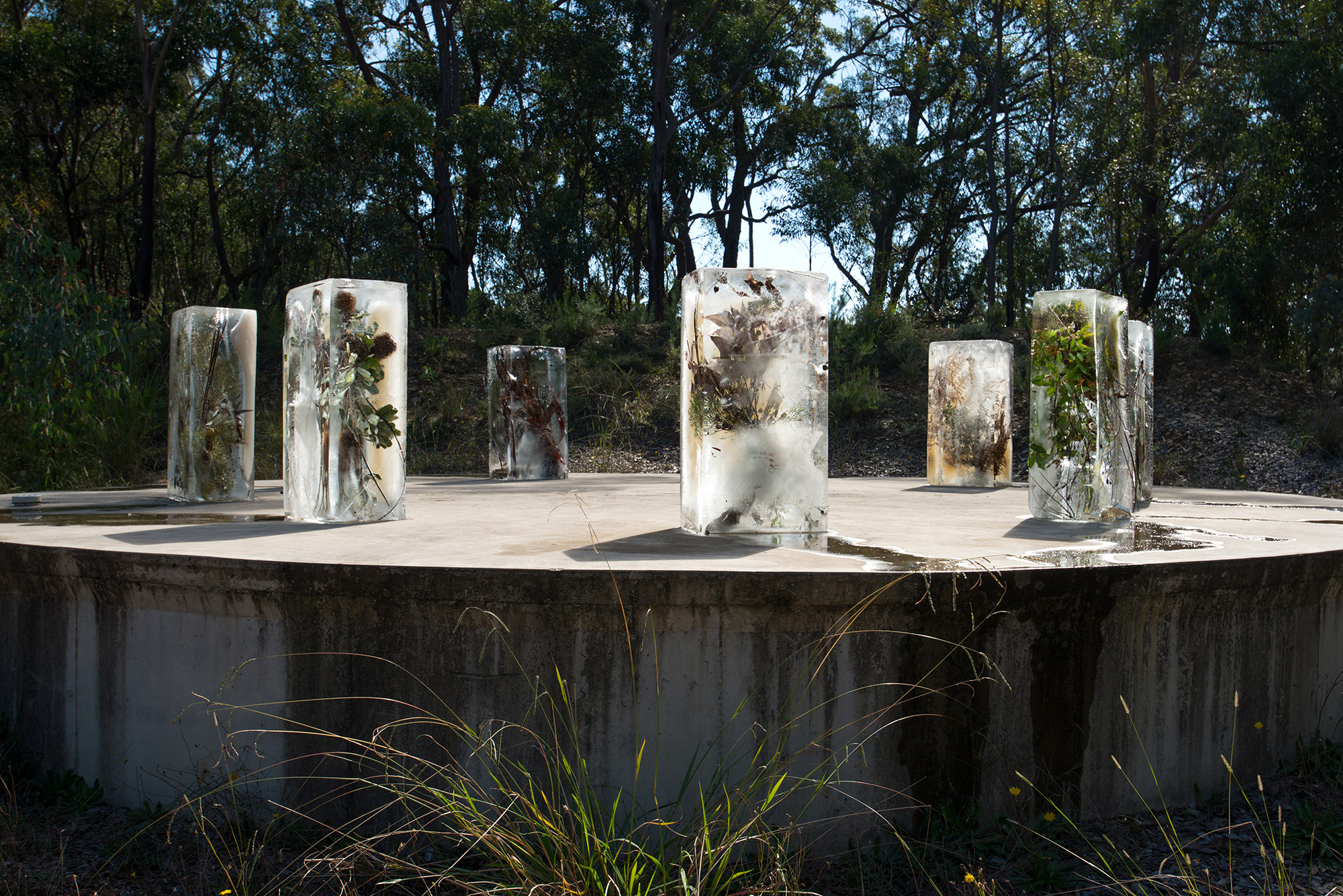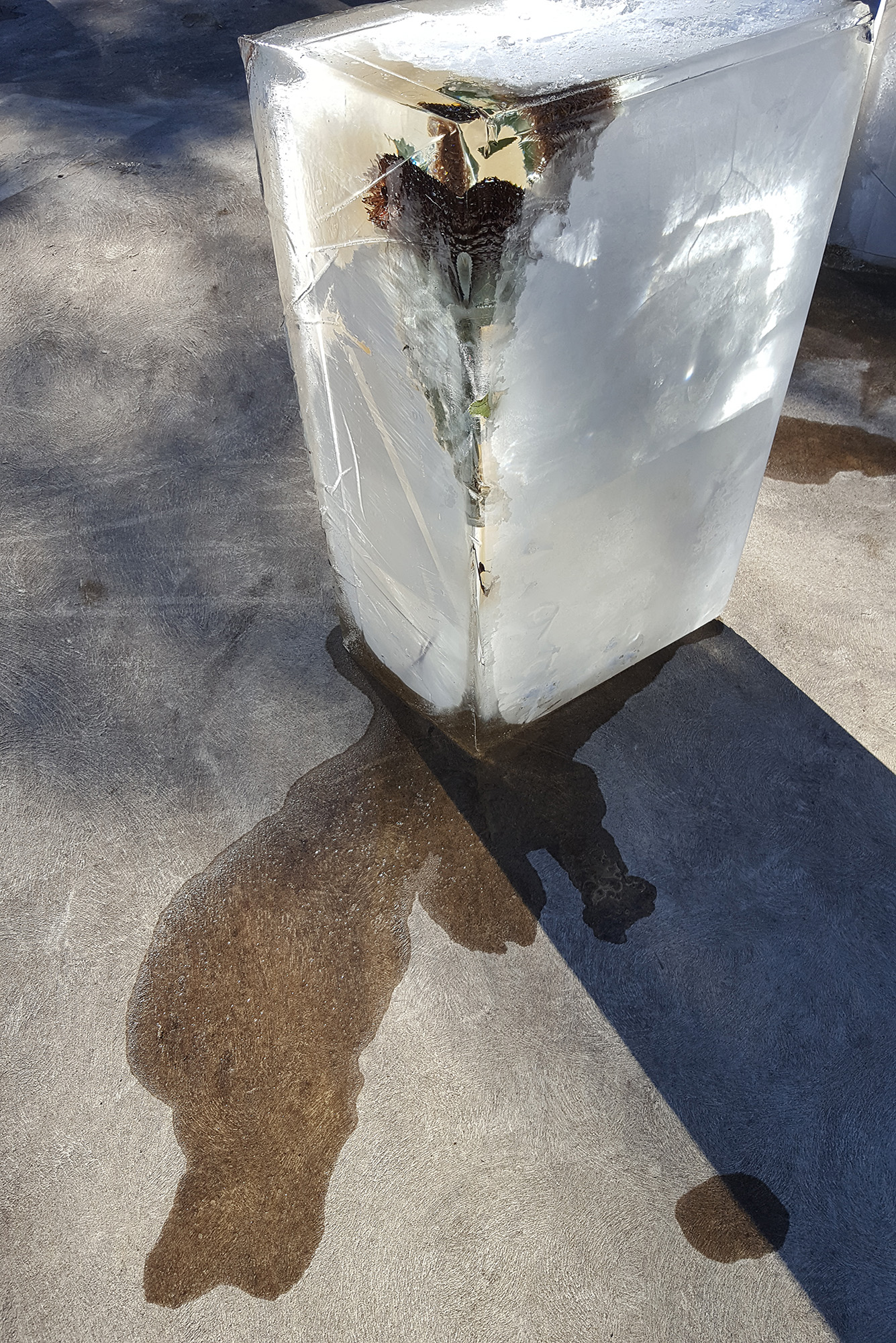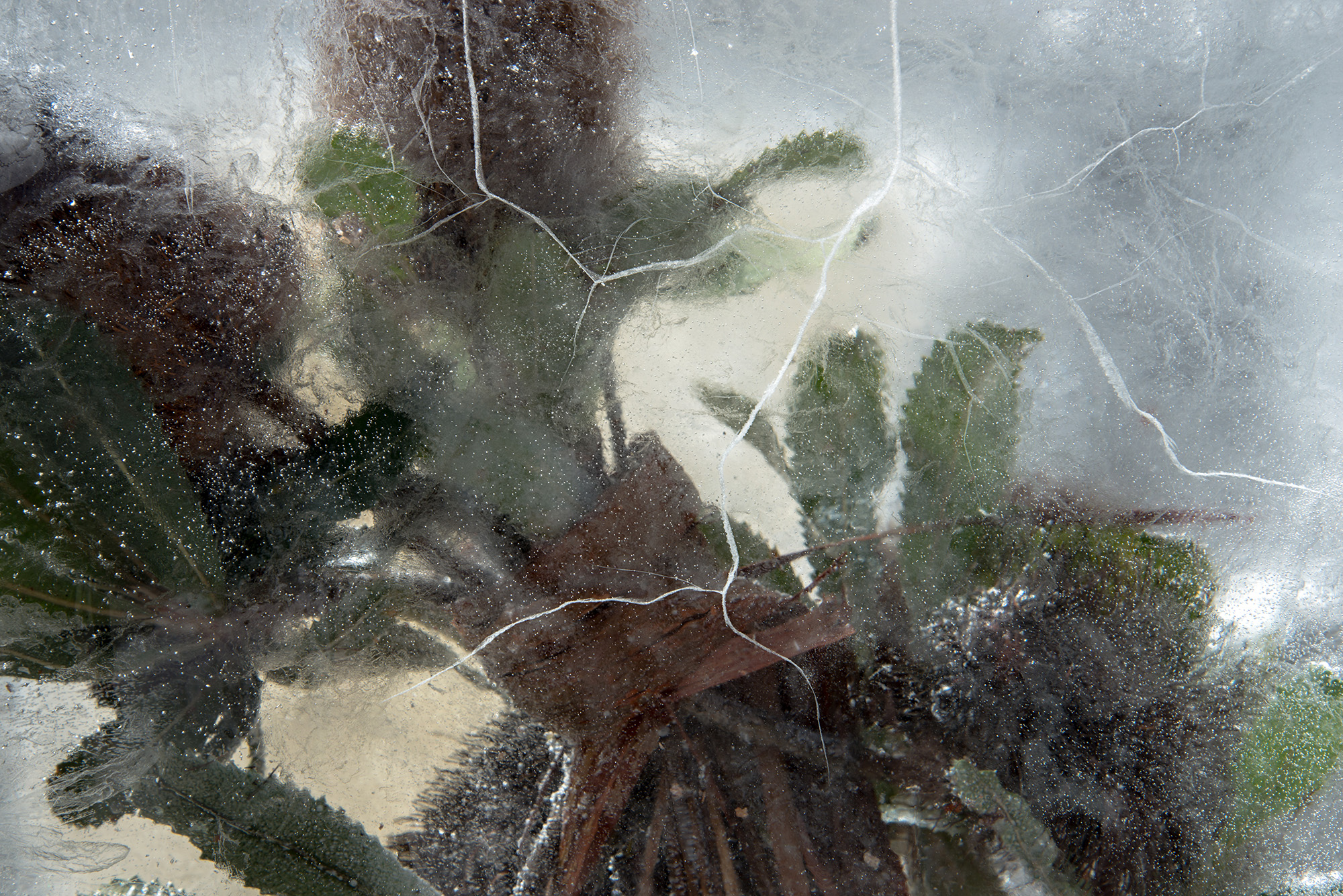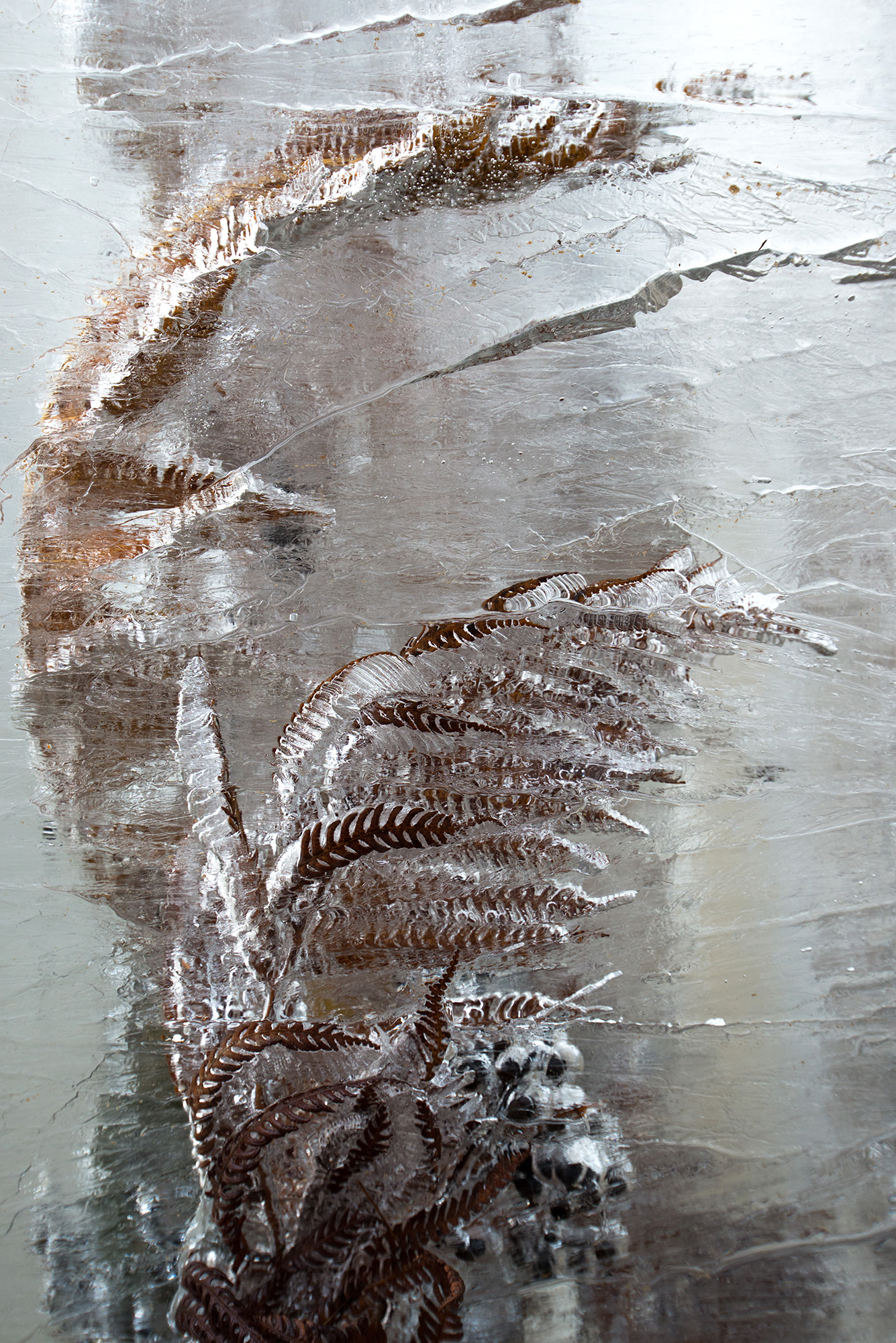POSTGLACIAL
Bilpin International Ground for Creative Initiatives (BigCi), Australia
Site-sensitive installation created as Artist in Residence at BigCi
Situated in Darug and Gundungurra Ngurra (Country)
Supported by the Ontario Arts Council
Cast ice, native Australian flora (windfall, downfall, and some samples gifted or collected with permission from private property)
2017
Postglacial is an elemental installation of nine ephemeral sculptures composed of Australian native flora suspended in ice. The work contemplates the deep time glacial pasts, interglacial interludes, and resilient postglacial survival stories experienced by the diverse plant species of southeastern Australia. Foraged windfall and downfall material from iconic trees, shrubs, and grasses of Australia’s Greater Blue Mountains UNESCO World Heritage Area in New South Wales were encased in cast ice for a one-day exhibition.
The Greater Blue Mountains possesses outstanding levels of plant diversity. The region’s eucalypt-dominated ecosystems have evolved since Australia separated from Gondwana, with primitive species such as the Wollemi pine (1), an endangered tree that lived among dinosaurs and has survived with little change for 200 million years. Today, over 1,500 species of native flora have been identified in the Greater Blue Mountains, of which over 100 are vulnerable, endangered, or critically endangered.
The botanical profile of southeastern Australia has changed dramatically since the ice age due to a long history of climate instability. A 2013 study suggests that the area was once even more diverse than it is today, and may have been one of the most biodiverse places on Earth before glaciation drove many of its plant species to extinction. Unable to survive rapid climate change, many plant species disappeared during glacial periods about one million years ago (2). In this sense, the native plants of the contemporary landscape are survivors. These robust species survived by adapting to change; persisting and travelling across Australia with cycles of glacial advance and retreat that began over a million years ago and concluded with the end of the last glacial period about 20,000 years ago. Scientists believe this adaptability makes the region’s current flora more equipped to survive the implications of climate change today and in the future.
Foraged native plant material was gathered and composed within large blocks of cast ice and installed on the surface of a large water tank fed by rainwater. The sculptures were created for a one-day exhibition in early April — autumn in Australia. An embodied legacy of textures and colours of leaves, flowers, dried seed pods, and tall grasses arranged into drifting masses were unveiled and released by the sun. By the next morning, the blocks began to shift, and one by one they slowly collapsed and fell. As each sculpture struck the cement platform, a deep bellow resonated from the earthly depths of the water tank like a giant stone drum.
Postglacial is a quiet contemplation of glacial pasts and future implications on living systems in the current age of human-induced biodiversity loss and climate change. In the same way that humans have histories of habitation and migration within a place, plants and animals also create their own stories of place occupation, and can rise and fall like ancient civilizations in the face of unprecedented change. The transformation of Postglacial acknowledges and mourns these past cultural losses while also signaling the urgency of the ecological shifts occurring today.
The sculptural ice water streamed off the tank surface and into the ground, where it could nurture the surrounding pant life, which paralleled the simultaneous arrival of springtime in the artist’s home country, Canada, at the time of the exhibition, when the melting of winter’s snow activates the eventful rise of spring wildflowers.
The plant material of Postglacial was conscientiously collected in autumn from private land in the Greater Blue Mountains through a regular practice of bushwalking in sclerophyll forests with the permission and guidance of local landowners and bushwalkers. Much of the material was collected as windfall or deadfall along existing footpaths and forest edges. All plant life was carefully and sparingly collected with consideration to not deplete communities, disturb wildlife habitats, or damage the stalks and root systems of individual plants. No rare or threatened species were collected or harmed. At the end of the exhibition, the plant material was returned to the forests.
Native Australian flora species included in the work include: Saw-tooth Banksia (Banksia serrata) flowers and leaves; Hairpin Banksia (Banksia spinulosa) flowers and leaves; Waratah (Telopea speciosissima) leaves; Mountain Devil (Lambertia formosa) fruit, stems, and leaves; Grass Tree (Xanthorrhoea) leaves; Black Wattle (Acacia decurrens) stems, leaves, and seed pods; Rough Tree Fern (Cyathea australis) fronds; Jarrah (Eucalyptus marginata) fruit, stems, and leaves; and various species of eucalypt tree leaves and bark.
Photograph by David Brazil
1. Hammill, Kathryn and Liz Tasker. Vegetation, Fire and Climate Change in the Greater Blue Mountains World Heritage Area. Department of Environment, Climate Change and Water, NSW, January 2010, p. 7.
2. University of Melbourne. "Ice age extinction shaped Australian plant diversity." ScienceDaily, February 13, 2013.
Karen Miranda Abel wishes to express respect and acknowledgement to the Elders, individuals, families, and communities of the six Aboriginal language groups—Darkinjung, Darug, Dharawal, Gundungurra, Wanaruah and Wiradjuri—who are the original and continuing Carers of Country in the Greater Blue Mountains World Heritage Area, Australia.
Special thanks to Bilpin International Ground for Creative Initiatives, Australia
The Ontario Arts Council is gratefully acknowledged for funding this project













